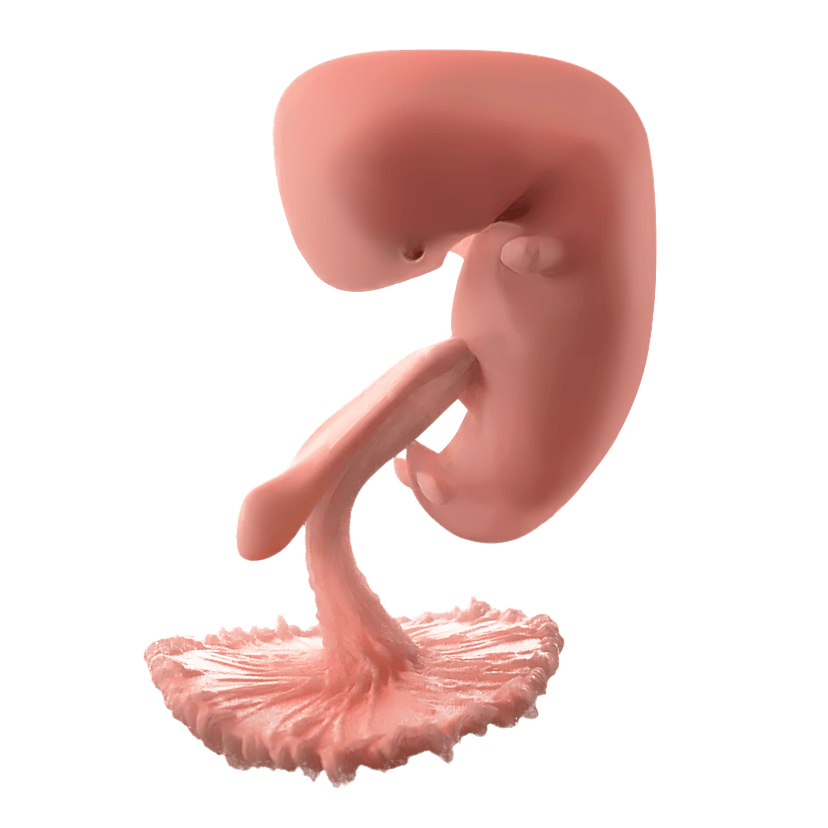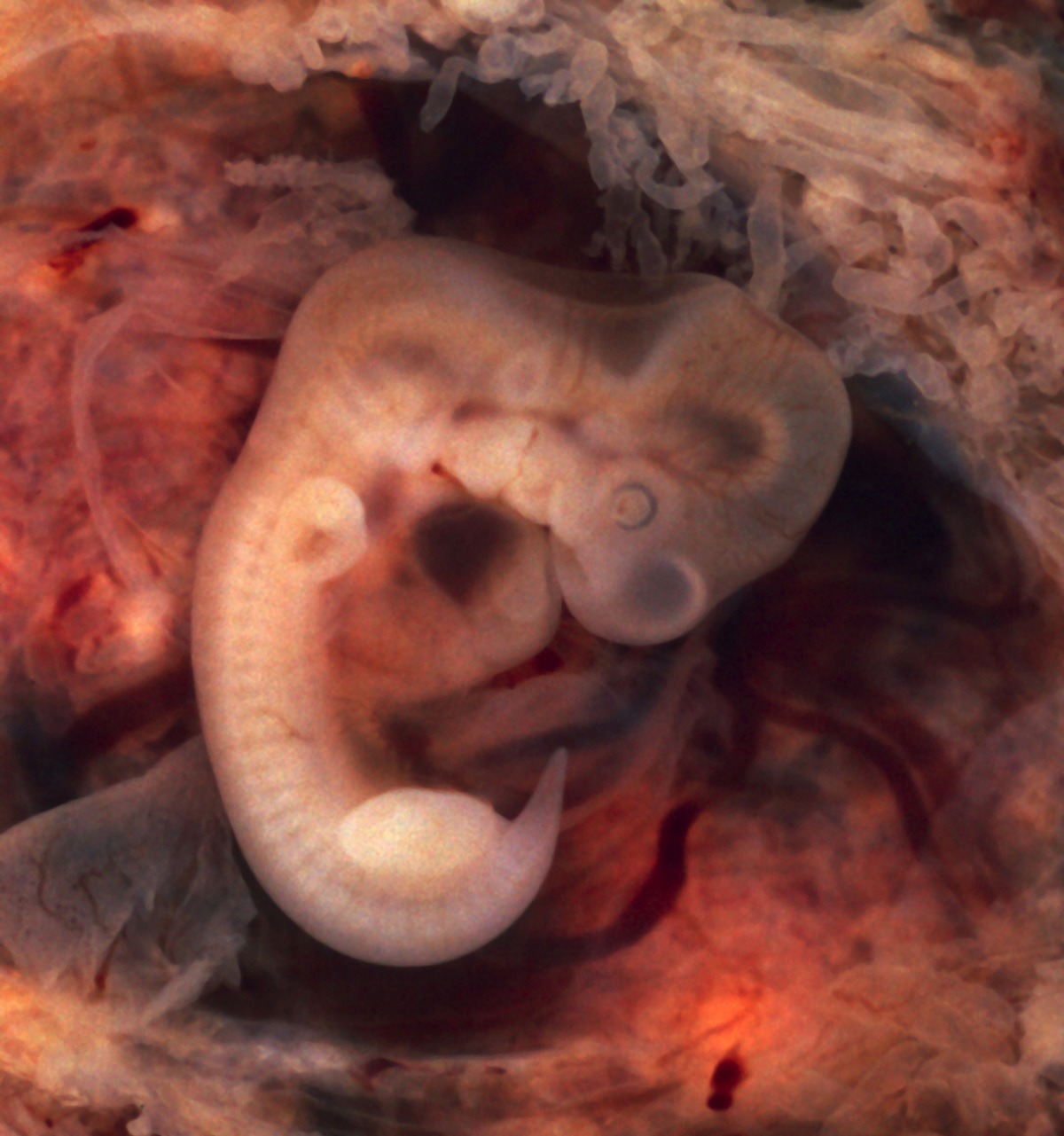By 7 ½ weeks gestation, the embryo responds to a light touch on her lips or cheeks by reflexively moving away!9 The embryo moves away when his umbilical cord or the wall of the uterus touches him in the womb. By 10 weeks the embryo is regularly touching himself or herself.10
Become A Defender of Life
Your donation helps us continue to provide world-class research in defense of life.
DONATECharlotte Lozier Institute
Phone: 202-223-8073
Fax: 571-312-0544
2776 S. Arlington Mill Dr.
#803
Arlington, VA 22206

Week 8
The first responses to touch
- Post-conception week 6
- Days 35-41
- Gestational Week 8
The embryo starts moving and responds to touch.1
The preborn baby has lips and a nose.
Eye pigment and eyelids start forming this week.2 The baby’s eye color will not finalize until about one year after birth.
Nerves enter the upper limb buds, and the arms start developing paddle-shaped hands.3
The glands that make saliva appear inside the mouth.4
Nipples form near the embryo’s underarm. Over the next few weeks they move into the final position on the chest.5 The heart and lungs move deeper into the chest.
This week, the preborn baby starts moving, and the first sense develops: touch. The first fetal movements are slow,6 but very important. Prenatal movement promotes normal bone and neuromuscular development.7 Before the embryo can move, connections must form between the embryo’s neurons and muscles. The first connections between neurons and muscles are observed just before the first fetal movements.8

At this point, the embryo grows about 1 mm per day. Different body parts, such as the arms, legs, and head grow in spurts. The hands develop 3 to 4 days before the feet. By 8 weeks, the rays that will become the thumbs and fingers start to form.11
Although the liver does not make blood cells after birth, it starts by making white blood cells for the embryo.12 The white blood cells become part of the developing immune system.
If a pregnancy is ectopic, the signs and symptoms begin between five and eight weeks gestation. In an ectopic pregnancy, the embryo implants outside of the uterus, most typically in the fallopian tube. In extremely rare cases, ectopic pregnancies can proceed to term,13 but in most cases, the embryo cannot continue to develop properly. For example, the embryo cannot grow large enough to survive inside the fallopian tube. Therefore, in these tragic medical emergencies, the embryo is either surgically removed or given drugs so that it stops growing.14 Thankfully, ectopic pregnancies are very rare.15








